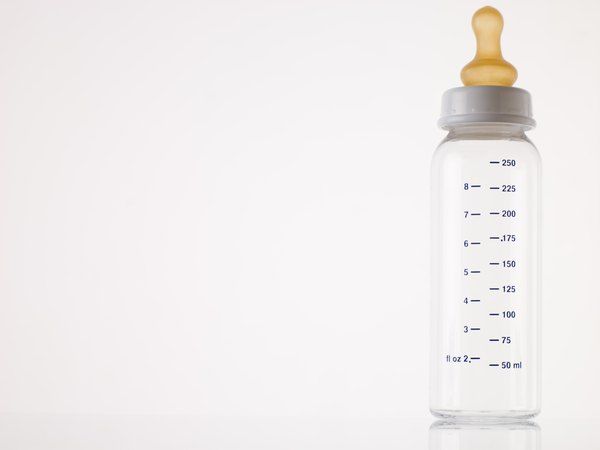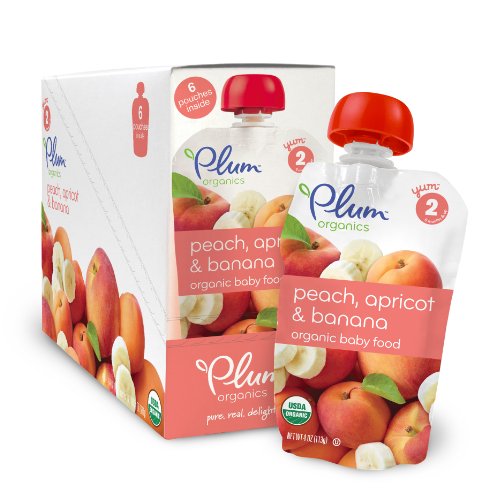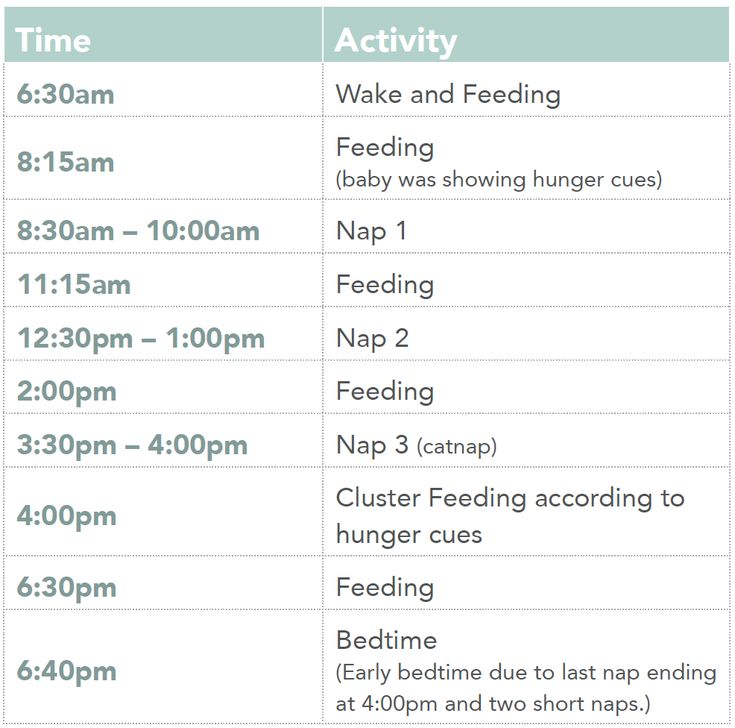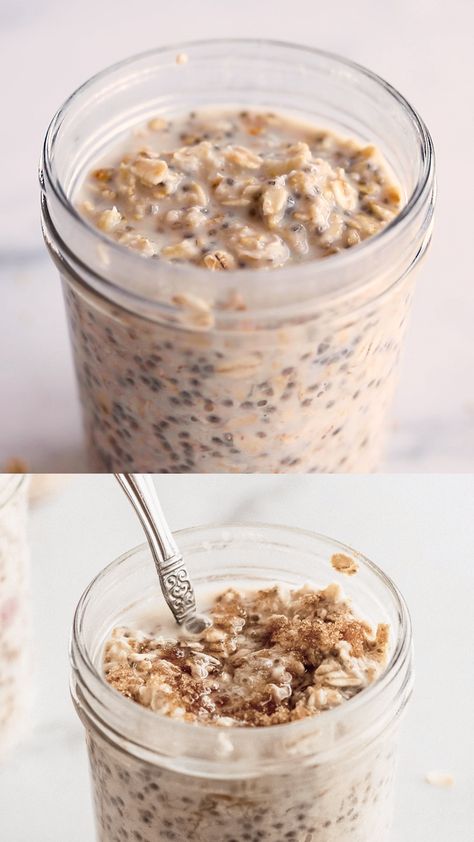When to feed your baby eggs
When Babies Can Eat Eggs: Recommendations & Risks
If you’re starting your baby on solid foods, you might be thinking about what exactly they can eat and which foods are best for them. Fruit? Check! Vegetables? Check! Meats? Check! But when can babies have eggs? Eggs seem to inspire lots of questions, perhaps because we’re more aware of children’s allergies these days than ever before.
Read on to find out when it’s OK to offer eggs, why eggs have so many health benefits for babies specifically, and which methods of preparing and serving eggs are the safest for babies to eat.
When Can Babies Have Eggs?
One common question is how old babies need to be to eat eggs. You can introduce eggs to your baby around the same time you introduce solid foods, which is around 6 months old.
In the beginning, however, you’ll want to start with very soft or pureed foods (which can include whole grain infant cereals) before you progress to offering more textured foods.
Within two to three months after your little one starts eating solid foods, their expanded diet may include cereal, vegetables, fruits, eggs, and meats as well as breast milk or formula.
The Health Benefits of Eggs for Babies
Eating eggs (both the yolk and whites) has many health benefits, particularly for babies. One large egg (50 grams) contains
high-quality protein
70 calories
essential vitamins, minerals, and bioactive compounds
147 milligrams of choline
30 milligrams of docosahexaenoic acid (DHA).
Choline is a key nutrient that’s involved in many biological reactions that take place in the body. For infants it’s very important for brain development and function. The same goes for DHA, which plays an important role in infant growth and brain development.
How to Introduce Eggs to Your Baby
Around the time you’re introducing eggs to your infant, it’s important to offer soft, easy-to-swallow foods that will break down into small pieces in their mouth to prevent choking.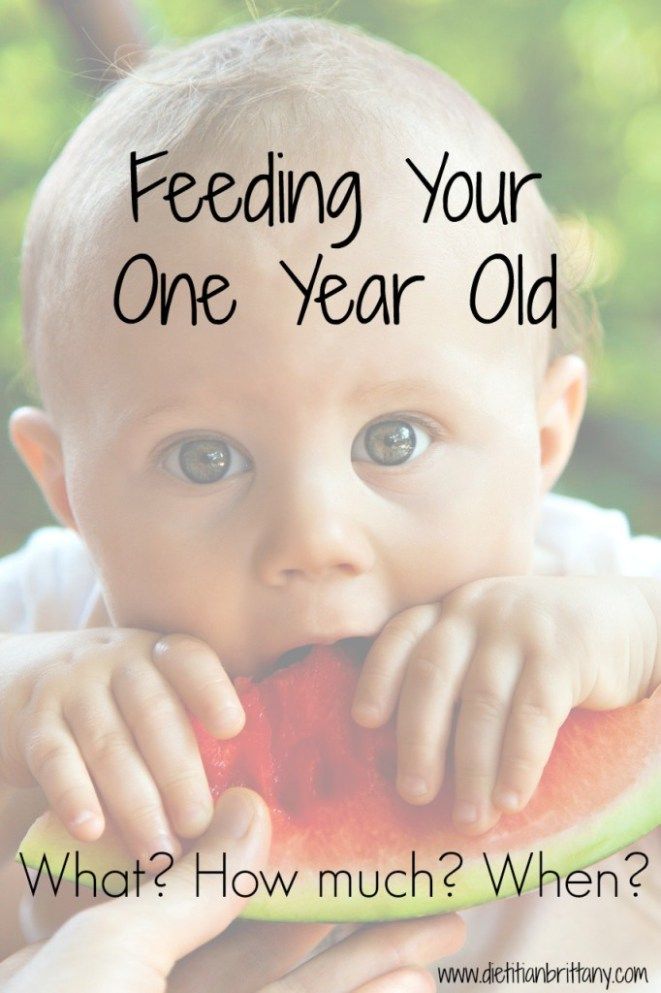 Since infants don’t yet have teeth, or have very few teeth, they aren’t able to chew—instead they mash foods with their mouths.
Since infants don’t yet have teeth, or have very few teeth, they aren’t able to chew—instead they mash foods with their mouths.
So, how do you cook eggs for your baby’s first time?
When it comes to preparing eggs for your baby, offer eggs that are scrambled, hard-boiled, or poached (as long as the eggs are firm and fully cooked). And how should you feed your baby eggs? You’ll want to mash the eggs with a fork to make them easier for your baby to eat.
If you’re a follower of baby-led weaning (BLW), you could offer these same preparations for eggs cut into small, finger food-style pieces and give them to your baby to self-feed.
Should You Delay the Introduction of Eggs to Your Baby?
In the past medical experts have advised against introducing eggs to infants and babies early on for fear of allergic reactions. But more recently experts have found there’s no reason to delay the introduction of eggs or other potential food allergens like fish and peanuts.
Introducing eggs to your baby (after 6 months of age) doesn’t increase the risk of an egg allergy or sensitivity. Therefore, delaying the introduction of eggs to your baby isn’t necessary.
Which Egg Dishes Should You Avoid Giving Your Baby?
Though scrambled eggs, hard-boiled eggs, and poached eggs with firm yolks are fine, other methods of preparing eggs in which the yolks are runny and undercooked aren’t recommended for babies—and even adults—due to the risk of salmonella. These include soft-boiled eggs, fried eggs with runny yolks, and poached eggs with runny yolks.
Here are some tips for buying, handling, and cooking eggs safely:
Always buy eggs that are in the refrigerator section of your grocery store or supermarket and opt for pasteurized
Keep eggs in a refrigerator set to 40 degrees Fahrenheit
Throw out any eggs that appear dirty or cracked
Cook eggs until the whites and yolks are firm.
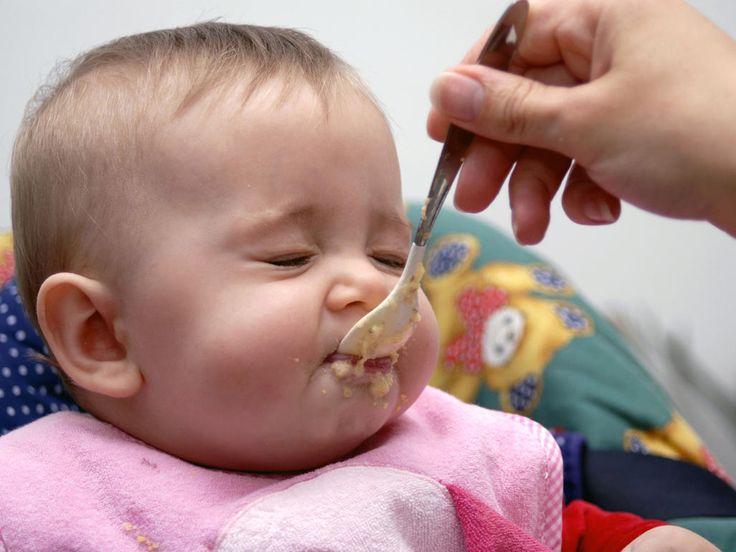
The Bottom Line
Eggs are a great source of protein and other nutrients that are integral to your child’s development. So, despite what has been said in the past, there’s no reason to delay the introduction of eggs to your infant for fear of them developing an egg allergy or sensitivity.
So, when can babies eat eggs? Start offering eggs around the same time you start your baby on solid foods, after 6 months of age. Your little one’s menu can begin with purees and very soft food (like infant cereal) and then expand to include more textured foods, such as eggs, fruits, vegetables, and meats.
Stick to preparations of eggs in which the yolks are fully cooked, such as hard-boiled, scrambled, and poached (with firm yolks). Avoid preparations that have runny yolks (soft-boiled eggs, fried eggs, and runny poached eggs) as there’s a risk of your baby contracting salmonella.
Starting on solid foods is an egg-citing time! Offering all different kinds of foods and watching your baby’s reactions will be priceless.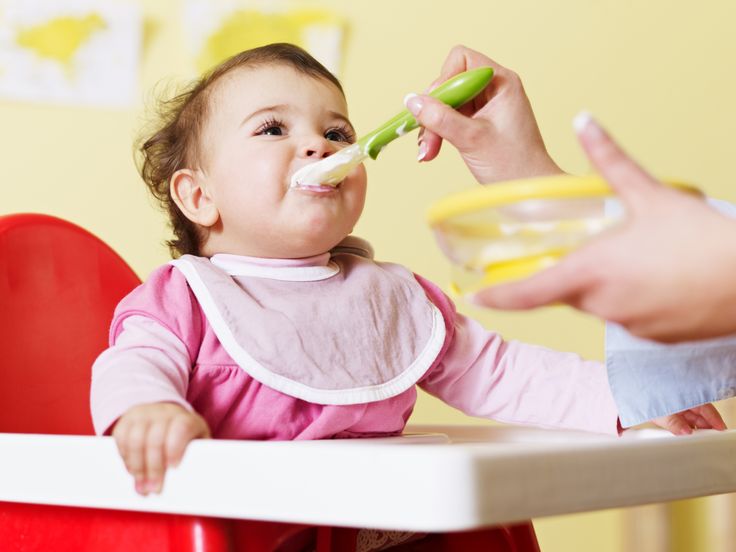
When Can Babies Eat Eggs? Are Eggs Safe for Babies? First Foods
When can babies eat eggs?
Eggs may be introduced as soon as baby is ready to start solids, which is generally around 6 months of age. Egg is a common food allergen, so consider baby’s risk factors and start with scant quantities of well-cooked egg (white and yolk) as some babies can have severe reactions to even the smallest amount of eggs.
Need ideas for the best first foods for babies? See our guides, like the Top 15 First Solid Foods for Babies
Warning
When serving eggs to baby, ensure that all parts of the egg are fully cooked, as eggs may contain Salmonella, a common bacterium which can result in foodborne illness in the intestinal tract, a risk offset by cooking eggs to 160° F (71°C), which may take slightly longer than you’re used to.1 2 3 Never use cracked or dirty eggs, which can increase the risk of foodborne illness.4
Background and uses of eggs
Much more than just a staple in cuisines across the globe, the egg has come to symbolize fertility, potential, and new life and plays a role in holidays from Christian Easter to Iranian New Year.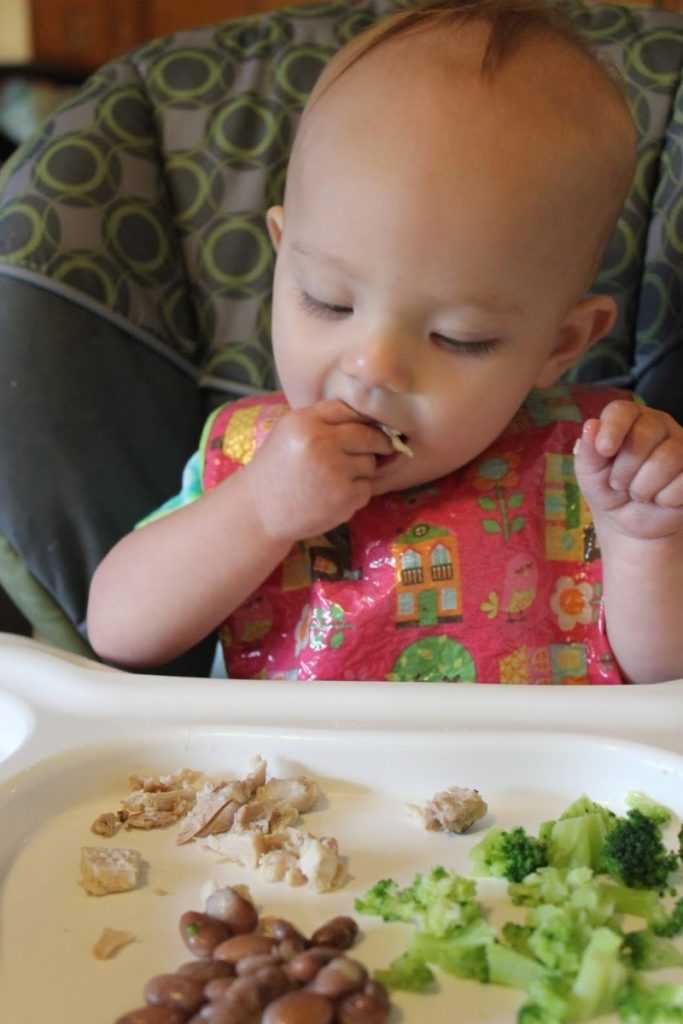 The information here focuses on eggs from chickens, although a number of other animals’ eggs are commonly eaten (such as duck eggs, quail eggs, goose eggs, and others). Eggs are nature-made to be highly nutritious, making them an excellent early food for babies.
The information here focuses on eggs from chickens, although a number of other animals’ eggs are commonly eaten (such as duck eggs, quail eggs, goose eggs, and others). Eggs are nature-made to be highly nutritious, making them an excellent early food for babies.
Chickens lay eggs regardless of whether they have been fertilized, and many modern chickens have been selectively bred for high egg production throughout the year. That said, eggs used to be a seasonal food, with egg laying at its peak when daylight was longest—consequently, diverse ways of preserving eggs for the winter developed, including salting, pickling, and fermenting them. It’s worth mentioning that eggs and milk are often found in the same refrigerated section of grocery stores, and both are animal products that we eat, but eggs are not a form of dairy, so families avoiding dairy can still prepare and eat eggs.
Are eggs healthy for babies?
Yes.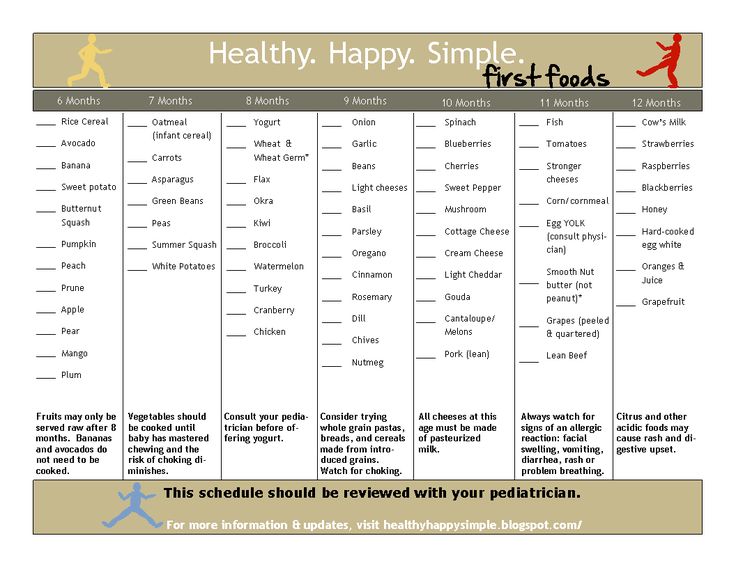 Eggs are a terrific source of protein, with a complete amino acid profile (the building blocks of cells) and essential fats, including saturated fats, cholesterol, and DHA (an omega-3 fatty acid) to build cell walls, and support brain growth and vision.5 Eggs are also rich in other B vitamins and folate, as well as selenium, zinc, and iodine, plus a small amount of iron (minimal in comparison to meat). Finally, they are one of the best sources of choline, an important nutrient for brain and nervous system development.6
Eggs are a terrific source of protein, with a complete amino acid profile (the building blocks of cells) and essential fats, including saturated fats, cholesterol, and DHA (an omega-3 fatty acid) to build cell walls, and support brain growth and vision.5 Eggs are also rich in other B vitamins and folate, as well as selenium, zinc, and iodine, plus a small amount of iron (minimal in comparison to meat). Finally, they are one of the best sources of choline, an important nutrient for brain and nervous system development.6
Egg yolks are one of the few food sources of vitamin D, which is vital for bone-building.7 Chickens raised outside can produce eggs with higher vitamin D levels as well as higher amounts of vitamin E and omega-3 fatty acids than eggs from their counterparts raised inside industrial coops.8 9
Purchasing eggs and deciphering food labels can be a dizzying process. Unfortunately, there is no perfect label to indicate the most ethically produced, environmentally friendly, and simultaneously most nutritious egg. Labels like “cage-free,” “free range,” “no antibiotics or hormones added” may sound like better options, but these terms often have loose definitions, and they don’t necessarily indicate that the eggs are more nutritious or produced more ethically.10 “Pasture raised” is not a distinction recognized by the USDA, so the term is used liberally, but can indicate that chickens regularly ate grasses and insects, which can pass on health benefits to their eggs.11 Other certifications such as Animal Welfare Approved or Certified Humane are meant to indicate certain standards in the treatment of chickens.
Labels like “cage-free,” “free range,” “no antibiotics or hormones added” may sound like better options, but these terms often have loose definitions, and they don’t necessarily indicate that the eggs are more nutritious or produced more ethically.10 “Pasture raised” is not a distinction recognized by the USDA, so the term is used liberally, but can indicate that chickens regularly ate grasses and insects, which can pass on health benefits to their eggs.11 Other certifications such as Animal Welfare Approved or Certified Humane are meant to indicate certain standards in the treatment of chickens.
While they often cost more than conventional eggs, pasture-raised eggs are still typically a less expensive protein source when compared to other animal proteins like meat and chicken. In some cases, local pasture-raised eggs may be cheaper than those from big brands and buying eggs in bulk and freezing extras may also help you get the most out of your dollar. For an even more budget-friendly approach, you can opt for omega-3 enriched eggs (the chickens are fed an omega-3 rich diet, which makes the eggs higher in omega-3s as well. )12
)12
★Tip: Wondering if your eggs are past their prime? Try the water test. Fill up a glass with water and drop the egg in. If it sinks, or stands up (but not floating), it’s safe to eat. If it floats to the top, it’s likely spoiled.13
Are eggs a common choking hazard?
No, though in theory an individual can choke on any food. To minimize the risk, serve eggs in thin, wide omelet strips, mash or quarter hard boiled eggs, and serve alongside a drink in an open cup. Eggs often stick to the tongue or roof of the mouth and cause a fair amount of gagging. As always, make sure you create a safe eating environment and stay within an arm’s reach of baby during meals. For more information on choking, visit our sections on gagging and choking and familiarize yourself with the list of common choking hazards.
Are eggs a common food allergen?
Yes. Egg allergies are among the most common food allergies in babies with an estimated 2% of children allergic to eggs. 14 The good news is that 70% of kids outgrow their egg allergy eventually.15 While the conventional wisdom was to wait on introducing eggs until around 2 years of age, we now know that there is no good reason to delay the introduction of egg into baby’s diet. In fact, there is evidence that early and sustained exposure to eggs in infancy can help prevent egg allergy from developing.16 17
14 The good news is that 70% of kids outgrow their egg allergy eventually.15 While the conventional wisdom was to wait on introducing eggs until around 2 years of age, we now know that there is no good reason to delay the introduction of egg into baby’s diet. In fact, there is evidence that early and sustained exposure to eggs in infancy can help prevent egg allergy from developing.16 17
If you are introducing eggs to baby for the first time, it’s recommended to start with a small portion of well-cooked egg and watch carefully for signs of allergy or sensitivity. If well-tolerated, you can offer additional egg at baby’s usual feeding pace. Allergists recommend maintaining common allergens, including egg, in the diet at least a couple of times a week once introduced.
Some babies can have severe reactions to even the smallest amount of egg. Allergic reactions may include fussiness, lethargy, watery eyes, hives, rashes, itching, facial swelling, wheezing, coughing, vomiting, diarrhea, and stomach cramps. If the reaction is mild, stop feeding the egg and contact your baby’s doctor for further guidance. If the reaction is severe and/or baby is having trouble breathing or seems unusually lethargic call emergency services immediately as baby may be experiencing anaphylactic shock. Never rely solely on the presence of a red rash to alert you to an allergic reaction, especially in babies with melanated skin—hives, rashes, and flushing may not be obvious in darker skin tones.
If the reaction is mild, stop feeding the egg and contact your baby’s doctor for further guidance. If the reaction is severe and/or baby is having trouble breathing or seems unusually lethargic call emergency services immediately as baby may be experiencing anaphylactic shock. Never rely solely on the presence of a red rash to alert you to an allergic reaction, especially in babies with melanated skin—hives, rashes, and flushing may not be obvious in darker skin tones.
A family history of food allergy is not typically a reason to defer egg introduction. However, if baby has severe eczema or another pre-existing food allergy, they may be at an increased risk of egg allergy. If this applies to your baby, reach out to your doctor before introducing egg, as they may suggest supervised egg introduction in the allergist’s office. If you believe your baby may be allergic to egg, make an appointment with a pediatric allergist. Many children with egg allergy can tolerate baked egg, and the allergist can help you determine if this would be an option for your baby.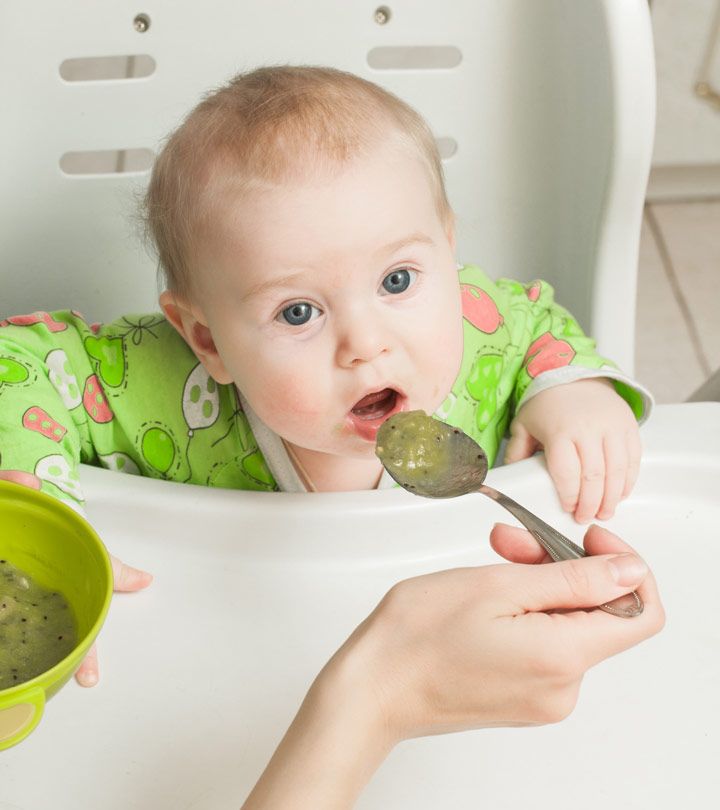
Lastly, eggs are a known trigger of food protein-induced enterocolitis syndrome, also known as FPIES. FPIES is a delayed allergy to food protein which causes the sudden onset of repetitive vomiting and diarrhea to begin a few hours after ingestion. Left untreated, the reaction can result in significant dehydration. Thankfully, FPIES which presents early in life is generally outgrown by the time the child has reached 3-5 years of age.18
Recommended Guide: Introducing Allergens to Babies
Can babies eat hard-boiled eggs?
Yes, though hard-boiled eggs present more of a choking hazard as the dry, chalky yolk can be challenging for young babies to move around in the mouth. While you can certainly offer quartered or sliced hard-boiled egg to babies 9 months and up (who are more able to pick up small pieces of food), other preparations like omelets and scrambled eggs fully integrate the yolk and white, making it more likely for babies to get that nutritious yolk into their bellies.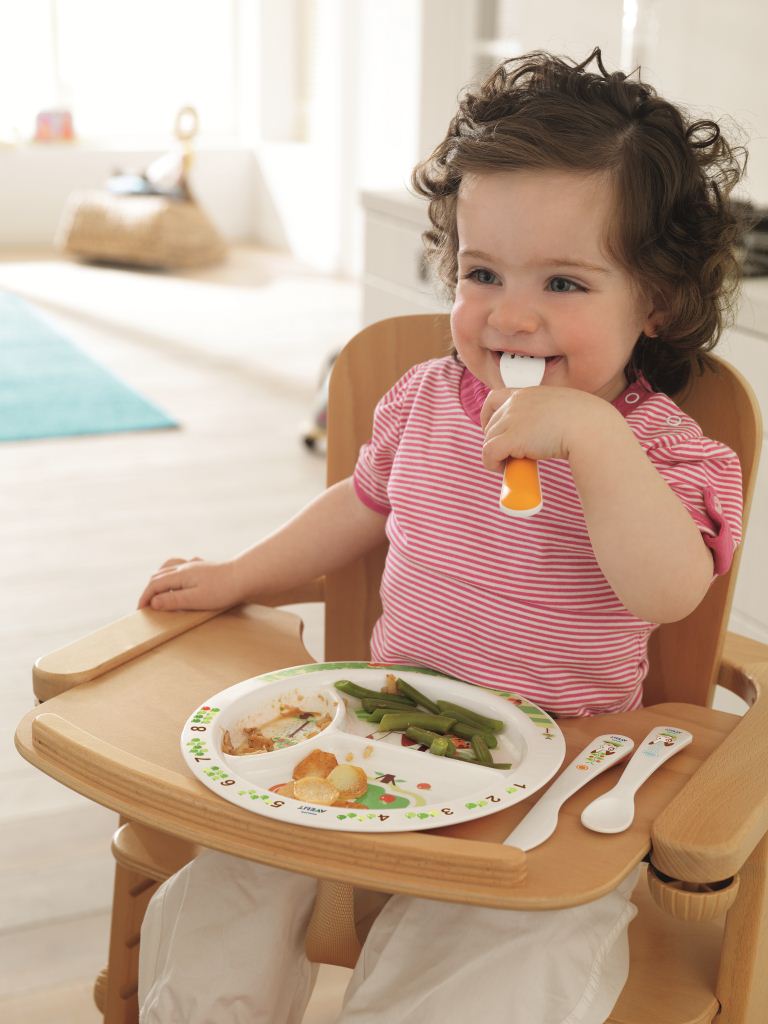 If you do decide to offer hard-boiled eggs before 9 months of age, try smashing them into an egg salad with a little water, breast/human milk, formula, or yogurt to integrate the yolk more fully.
If you do decide to offer hard-boiled eggs before 9 months of age, try smashing them into an egg salad with a little water, breast/human milk, formula, or yogurt to integrate the yolk more fully.
Is it safe for babies to eat runny or raw eggs?
Generally, no. Even though it is common in some cultures to offer raw egg yolks to baby, ideally, babies should not be served runny or raw eggs (including sunny-side up, over-easy, or soft-boiled), as consuming undercooked eggs increases the risk of contracting Salmonellosis (nontyphoidal Salmonella), a serious foodborne illness. That said, eggs with the British Lion Mark are generally considered safe to consume when runny or raw, since they are produced under very strict guidelines to help significantly reduce the risk of Salmonella.19 While runny Lion Mark eggs are considered safe for high-risk individuals like babies, pregnant persons, and the elderly, this does not apply to immunocompromised individuals. 20 21 22
20 21 22
Each year, Salmonellosis causes about 155,000 deaths worldwide and about 1.3 million infections in the United States.23 24 While eggs are one of several foods that can cause Salmonellosis, meat, chicken, vegetables, and dairy products are other foods that have also been associated with outbreaks.25
Salmonellosis can cause a range of symptoms, the most common being fever, abdominal cramps, diarrhea, and vomiting. Children under 5 years of age and individuals who are immunocompromised or have sickle cell disease are the most at risk for contracting Salmonellosis, and infants are at the highest risk of a more severe form of Salmonellosis, which can be deadly if not treated quickly with antibiotics.26 27 28 29 In most people, the symptoms will resolve without antibiotics or medical intervention within 4-7 days.30
When can a child have runny eggs?
This is a personal decision for which you must calculate risk, as there is no defined age at which runny or raw eggs become definitively safe. Children under 5 years of age, immunocompromised individuals, and those with sickle cell disease are among those at highest risk of severe food poisoning from Salmonella, so it’s best to err on the side of safety and avoid serving undercooked eggs to babies and children.31 32
Children under 5 years of age, immunocompromised individuals, and those with sickle cell disease are among those at highest risk of severe food poisoning from Salmonella, so it’s best to err on the side of safety and avoid serving undercooked eggs to babies and children.31 32
For some individuals, it is culturally important to offer runny eggs to their children. In these situations, consider the risk in the context of your culture and your individual child’s health and needs. The risk of illness can be reduced by:33 34
- Purchasing pasteurized eggs and egg products.
- Purchasing eggs from hens that have been vaccinated against Salmonella (such as Lion Mark eggs in the United Kingdom).35
- Refraining from buying or using any visibly dirty or cracked eggs. If you do have a dirty egg, gently rub off the visible soilage with a brush or cloth rather than washing it.36
- Refrigerating eggs at 40°F (4°C) or colder at all times.
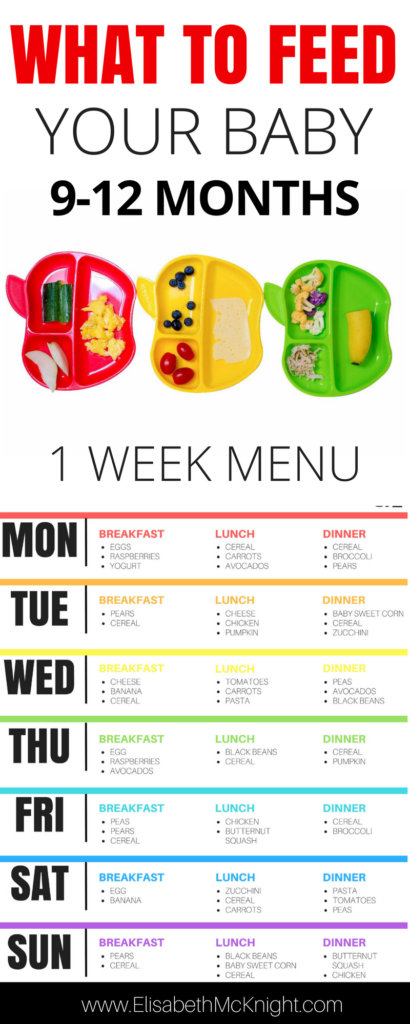
- Washing hands and anything else (utensils, dishes, countertops, etc.) that has come into contact with raw eggs with soap and water.
- Refraining from keeping eggs and foods made with egg warm or at room temperature for more than 2 hours. If room temperature is 90°F or hotter, cooked egg and foods made with egg should be refrigerated or discarded after 1 hour.
- Note: unfrosted baked goods (such as bread and muffins) are an exception, and may be stored at room temperature (about 70 degrees F or 21 degrees C or lower) for up to 5 days.
- Consuming refrigerated leftover dishes that contain eggs within 3-4 days.37
Can babies and toddlers eat eggs every day?
Yes, it is fine for children to eat eggs daily. Eggs are nutritious and versatile and are typically affordable and accessible as well. In some cases, repeatedly eating eggs prepared in the same way daily may lead to a child tiring of the food and potentially rejecting the food down the line.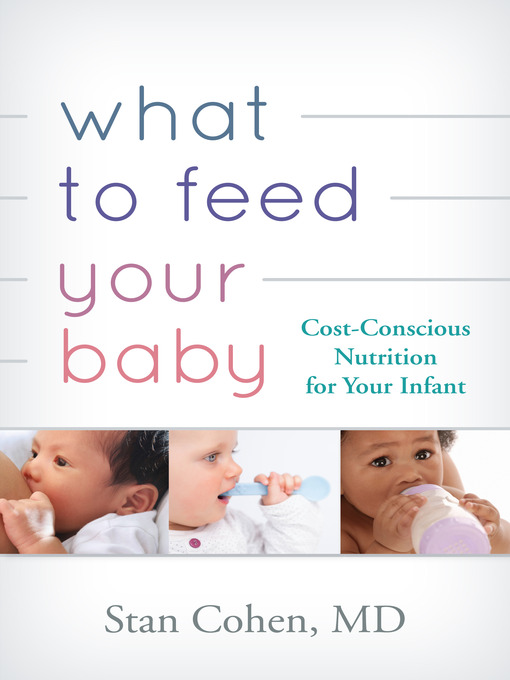 To help avoid taste fatigue, try offering eggs in a variety of forms and, as always, offer a diverse diet to ensure balanced nutrition and a healthy relationship with food.
To help avoid taste fatigue, try offering eggs in a variety of forms and, as always, offer a diverse diet to ensure balanced nutrition and a healthy relationship with food.
Concerned about baby’s cholesterol intake? Recent research has shown that dietary cholesterol does not appear to contribute to cardiovascular risk but rather supports the human body in many ways.38
How can eggs affect baby's poop?
Egg isn’t generally considered as a food that promotes pooping. That said, it can play a supporting role in healthy bowel movements as a part of a balanced and varied diet. Pooping patterns can vary significantly from baby to baby, so be sure to talk to your pediatric healthcare provider if you have concerns about your baby’s pooping or digestive function.
How do you introduce eggs to babies with baby-led weaning?
Every baby develops on their own timeline, and the suggestions on how to cut or prepare particular foods are generalizations for a broad audience.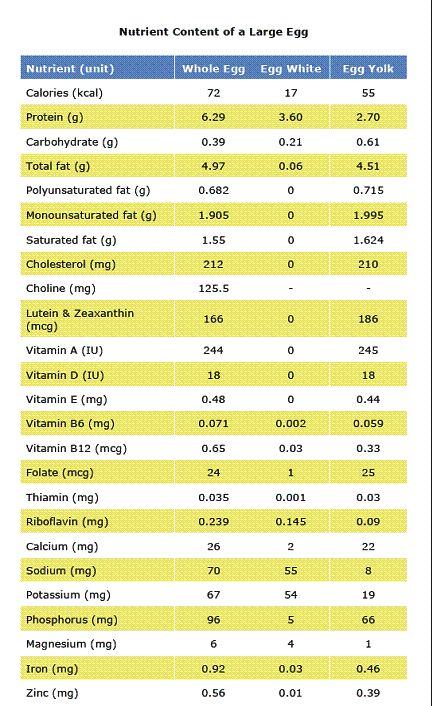 Your child is an individual and may have needs or considerations beyond generally accepted practices. In determining the recommendations for size and shape of foods, we use the best available scientific information regarding gross, fine, and oral motor development to minimize choking risk. The preparation suggestions we offer are for informational purposes only and are not a substitute for child-specific, one-on-one advice from your pediatric medical or health professional or provider. It is impossible to fully eliminate all risk of a baby or child choking on any liquid, puree, or food. We advise you to follow all safety protocols we suggest to create a safe eating environment and to make educated choices for your child regarding their specific needs. Never disregard professional medical advice or delay in seeking it because of something you have read or seen here.
Your child is an individual and may have needs or considerations beyond generally accepted practices. In determining the recommendations for size and shape of foods, we use the best available scientific information regarding gross, fine, and oral motor development to minimize choking risk. The preparation suggestions we offer are for informational purposes only and are not a substitute for child-specific, one-on-one advice from your pediatric medical or health professional or provider. It is impossible to fully eliminate all risk of a baby or child choking on any liquid, puree, or food. We advise you to follow all safety protocols we suggest to create a safe eating environment and to make educated choices for your child regarding their specific needs. Never disregard professional medical advice or delay in seeking it because of something you have read or seen here.
6 to 9 months old: The easiest way to introduce eggs for this age is via a well-cooked omelet cut into rectangular strips about the size of two adult fingers held together. This shape makes it easy for babies to hold and eat independently. If baby is having a hard time picking up food from the table or high chair, try handing egg strips over in the air vertically. Want to serve hard-boiled eggs? Simply mash with water, avocado, breast (human) milk, formula, or yogurt if dairy has been safely introduced.
This shape makes it easy for babies to hold and eat independently. If baby is having a hard time picking up food from the table or high chair, try handing egg strips over in the air vertically. Want to serve hard-boiled eggs? Simply mash with water, avocado, breast (human) milk, formula, or yogurt if dairy has been safely introduced.
9 to 12 months old: At this age, baby’s pincer grasp (where the thumb and pointer finger meet) is developing, enabling baby to pick up smaller pieces of food. As such, this is a great time to reduce the size to small, bite-size pieces of omelets, scrambled egg, or hard-boiled egg (quartered or small pieces). With hard-boiled eggs, offer water in a cup along with the hard-boiled egg to help with managing the dry yolk. If baby is struggling to pick up small pieces of food, it’s absolutely fine to continue to offer omelet strips, and of course, you can always mash eggs with milk, formula, or foods like avocado or yogurt for scooping or pre-loaded utensils.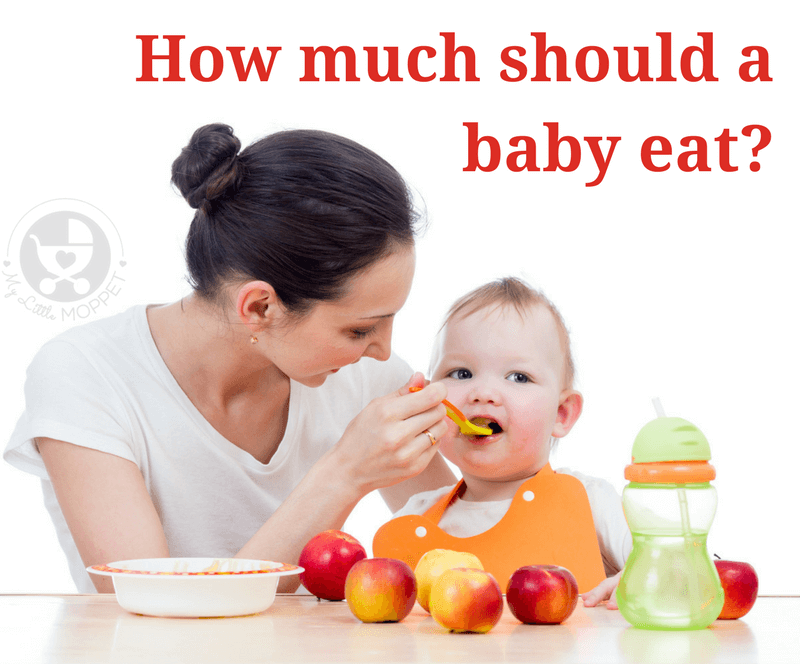
12 to 24 months old: Explore a wide variety of egg preparations, cutting omelets and hard-boiled eggs into small pieces and continuing to make sure the eggs are thoroughly cooked. This is a great time to work on forks, and little omelet squares can be great for utensil practice. Egg cups are also an excellent way to serve a nutritious breakfast that can be made ahead of time, frozen, and warmed. Offering an egg cup also allows toddlers to practice taking accurate bites. Want to serve a whole hard-boiled egg? Go for it. Just have a cup of milk or water nearby to help wash down the chalky yolk.
A strip of omelet for babies 6 months +Bite-sized pieces of omelet for babies 9 months+Hard boiled egg mashed with water for babies 6 months+Bite-sized pieces of hard boiled egg for babies 9 months+Introducing common allergens to babies can be scary, but our First 100 Days: Daily Meal Plan for Starting Solids takes you step by step.
What are recipe ideas for cooking with eggs?
The versatility of eggs is a marvel of kitchen chemistry. They can be hard-boiled, soft-boiled, poached, fried, and scrambled; in baking, they have a vital role in pie crusts, sweet breads, custards, souffles, meringues, and so much more. Because of their chemical composition, eggs also absorb other flavors and liquids well, as can be seen in the traditional Chinese snack chá yè dàn or “tea egg,” a hard-boiled egg that is then cracked and placed in a spiced tea mixture to steep. While many egg preparations are generally savory, sweet eggs are fine as a once-in-awhile food for children and are popular in some parts of the world. Khagineh, for example, is an omelet from Iran made with sugar, butter, and spices.
They can be hard-boiled, soft-boiled, poached, fried, and scrambled; in baking, they have a vital role in pie crusts, sweet breads, custards, souffles, meringues, and so much more. Because of their chemical composition, eggs also absorb other flavors and liquids well, as can be seen in the traditional Chinese snack chá yè dàn or “tea egg,” a hard-boiled egg that is then cracked and placed in a spiced tea mixture to steep. While many egg preparations are generally savory, sweet eggs are fine as a once-in-awhile food for children and are popular in some parts of the world. Khagineh, for example, is an omelet from Iran made with sugar, butter, and spices.
★Tip: To freeze raw eggs for later, first crack the eggs open and pour into a bowl. Beat the eggs gently with a fork to mix well, then pour the mixture into the same number of containers as eggs if you want to be able to pull out 1 frozen egg from the freezer. So, if you started with 4 eggs to freeze, divide the mixture into 4 small freezer baggies. If you are doing more than one egg in a freezer bag/container, label with the number of eggs in each bag as well as the date. Eggs will last up to 1 year in the freezer.
If you are doing more than one egg in a freezer bag/container, label with the number of eggs in each bag as well as the date. Eggs will last up to 1 year in the freezer.
Recipe: Baby's First Eggs
Yield: 1 omelet (150 grams)
Cooking Time: 10 minutes
Age: 6 months+
Ingredients
- 2 eggs
- 2 tablespoons (30 milliliters) water
- 2 teaspoons (10 milliliters) olive oil
This recipe contains a common allergen: eggs. If serving this allergen for the first few times, offer a very small amount and watch baby closely for signs of a reaction.
Directions
- Crack the eggs into a bowl and whisk well, adding a little water.
- Heat a non-stick skillet on medium with some olive oil and when it’s hot, pour the egg mixture in, lower the heat to medium-low, and cover.
- Cook the eggs as an open-face omelet for a few minutes and then, once the eggs are set and firm, fold them in half with a spatula and cook a bit longer until the inside of the omelet is completely done (to 160° F or 71°C).
 Let the omelet cool completely.
Let the omelet cool completely. - Serve: Cut the omelet into strips about the size of two adult fingers held together. Place the strips on the tray or table in front of the baby for them to self-feed. If baby has trouble picking up the strips, offer one in the air for baby to grab.
To Store: Leftovers can be stored in an air-tight container or tightly wrapped in the refrigerator for 3 days or in the freezer for up to 3 months.
Babies like variety just like everyone else! Mix up your mornings with our guide, 50 Breakfasts for Babies & Toddlers.
Flavor Pairings
The taste of egg varies, depending on the lifestyle of the chicken that laid it, but generally, egg white has a mellow flavor with a hint of sulfur, and egg yolk has a slightly stronger, buttery taste. Eggs pair wonderfully with many things and absorb flavors and sauces readily. Cook eggs with cheese, onions, and leftover veggies, such as steamed broccoli or sautéed spinach, or with tomato, as in the dish called shakshuka. Eggs also present a great opportunity to introduce new spices to your baby’s palate, such as chives, parsley, thyme, or oregano.
Eggs also present a great opportunity to introduce new spices to your baby’s palate, such as chives, parsley, thyme, or oregano.
Reviewed by
J. Truppi, MSN, CNS
V. Kalami, MNSP, RD, CSP
K. Grenawitzke, OTD, OTR/L, SCFES, IBCLC, CNT
S. Bajowala, MD, FAAAAI, Board-Certified Allergist and Immunologist (allergy section)
R. Ruiz, MD, FAAP Board-Certified General Pediatrician and Pediatric Gastroenterologist
- Caffarelli, C., Di Mauro, D., Mastrorilli, C., Bottau, P., Cipriani, F., & Ricci, G. (2018). Solid Food Introduction and the Development of Food Allergies. Nutrients, 10(11), 1790. DOI: 10.3390/nu10111790. Retrieved June 4, 2021.
- Whiley, H., & Ross, K. (2015). Salmonella and eggs: from production to plate. International journal of environmental research and public health, 12(3), 2543–2556. DOI: 10.3390/ijerph220302543. Retrieved June 4, 2021.
- Davis AL, Curtis PA, Conner DE, McKee SR, Kerth LK.
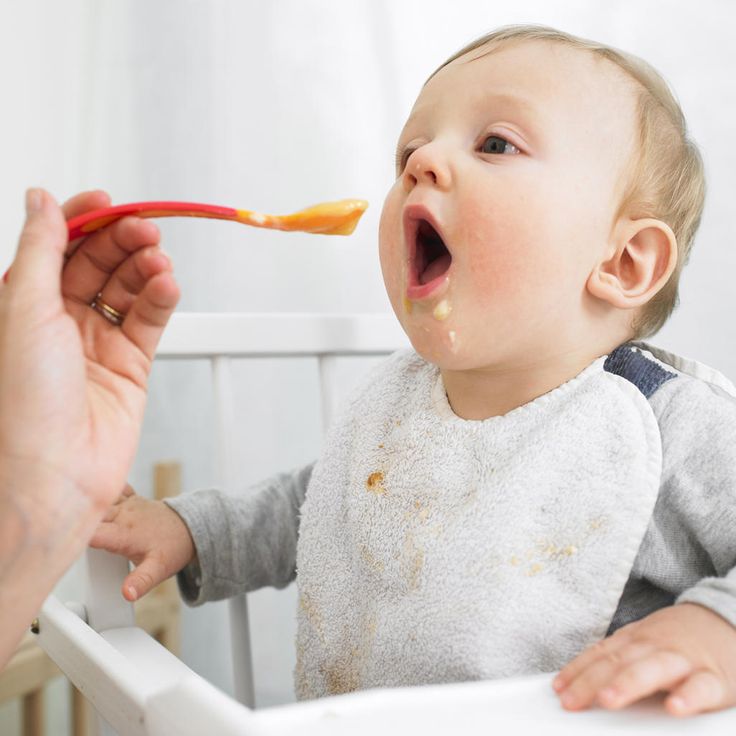 (2008). Validation of cooking methods using shell eggs inoculated with Salmonella serotypes Enteritidis and Heidelberg. Poultry Science, 87(8), 1637-42. DOI: 10.3382/ps.2007-00419. Retrieved June 4, 2021.
(2008). Validation of cooking methods using shell eggs inoculated with Salmonella serotypes Enteritidis and Heidelberg. Poultry Science, 87(8), 1637-42. DOI: 10.3382/ps.2007-00419. Retrieved June 4, 2021. - Centers for Disease Control and Prevention. (2021). Salmonella and eggs. Retrieved July 6, 2021.
- Lutter, C. K., Iannotti, L. L., & Stewart, C. P. (2018). The potential of a simple egg to improve maternal and child nutrition. Maternal & child nutrition, 14 Suppl 3, e12678. DOI: 10.1111/mcn.12678. Retrieved June 4, 2021.
- Lutter, C. K., Iannotti, L. L., & Stewart, C. P. (2018). The potential of a simple egg to improve maternal and child nutrition. Maternal & child nutrition, 14 Suppl 3, e12678. DOI: 10.1111/mcn.12678. Retrieved June 4, 2021.
- Schmid, A., & Walther, B. (2013). Natural vitamin D content in animal products. Advances in nutrition, 4(4), 453–462. DOI: 10.3945/an.113.003780. Retrieved June 4, 2021.
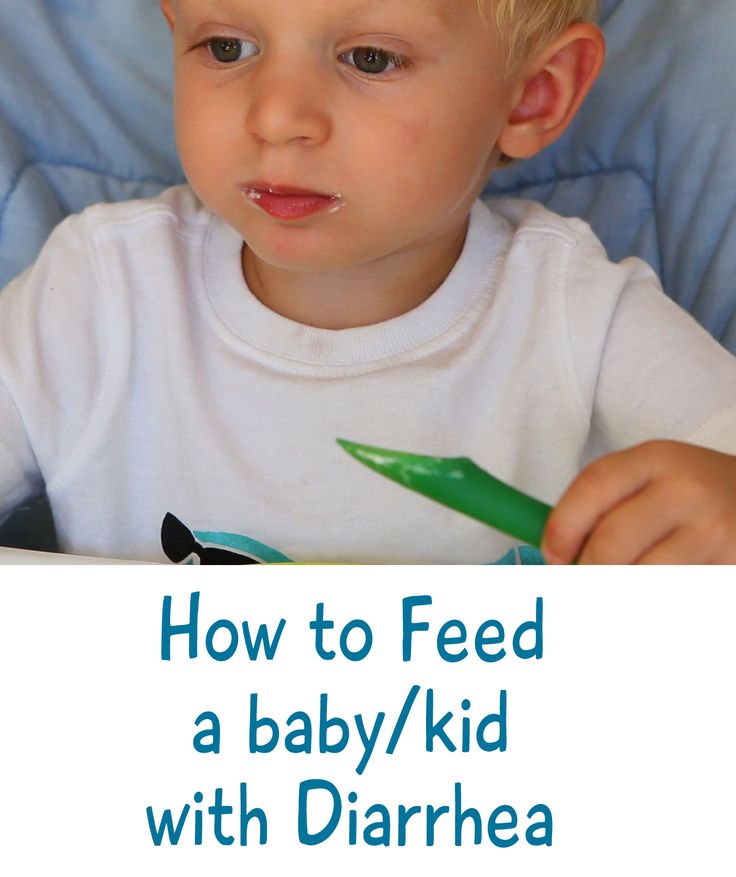
- Karsten, H., Patterson, P., Stout, R., & Crews, G. (2010). Vitamins A, E and fatty acid composition of the eggs of caged hens and pastured hens. Renewable Agriculture and Food Systems, 25(1), 45-54. DOI:10.1017/S1742170509990214. Retrieved June 4, 2021.
- Guo, J., Lovegrove, J. A., & Givens, D. I. (2018). 25(OH)D3-enriched or fortified foods are more efficient at tackling inadequate vitamin D status than vitamin D3. The Proceedings of the Nutrition Society, 77(3), 282–291. DOI: 10.1017/S0029665117004062. Retrieved June 4, 2021.
- U.S. Department of Agriculture. Shell egg labeling guidelines for product bearing the USDA grademark. Retrieved June 4, 2021.
- Karsten, H., Patterson, P., Stout, R., & Crews, G. (2010). Vitamins A, E and fatty acid composition of the eggs of caged hens and pastured hens. Renewable Agriculture and Food Systems, 25(1), 45-54. DOI:10.1017/S1742170509990214. Retrieved June 4, 2021.
- Coorey, R.
 , Novinda, A., Williams, H., & Jayasena, V. (2015). Omega-3 fatty acid profile of eggs from laying hens fed diets supplemented with chia, fish oil, and flaxseed. Journal of food science, 80(1), S180–S187. DOI: 10.1111/1750-3841.12735. Retrieved June 4, 2021.
, Novinda, A., Williams, H., & Jayasena, V. (2015). Omega-3 fatty acid profile of eggs from laying hens fed diets supplemented with chia, fish oil, and flaxseed. Journal of food science, 80(1), S180–S187. DOI: 10.1111/1750-3841.12735. Retrieved June 4, 2021. - U.S. Department of Agriculture. (2019). Shell eggs from farm to table. Retrieved May 20, 2022
- Food Allergy Research & Education. (n.d.) Egg allergy. Retrieved June 4, 2021.
- American College of Allergy, Asthma & Immunology. (2019). Egg allergy. Retrieved June 4, 2021.
- Perkin MR, Logan K, Tseng A, Raji B, Ayis S, Peacock J, Brough H, Marrs T, Radulovic S, Craven J, Flohr C, Lack G; EAT Study Team. (2016). Randomized Trial of Introduction of Allergenic Foods in Breast-Fed Infants. New England Journal of Medicine, 374(18):1733-43. DOI: 10.1056/NEJMoa1514210. Retrieved July 6, 2021.
- Fleischer DM, Chan ES, Venter C, et al. (2021). A Consensus Approach to the Primary Prevention of Food Allergy Through Nutrition: Guidance from the American Academy of Allergy, Asthma, and Immunology; American College of Allergy, Asthma, and Immunology; and the Canadian Society for Allergy and Clinical Immunology.
 J Allergy Clin Immunol Pract. 9(1):22-43.e4. doi:10.1016/j.jaip.2020.11.002. Retrieved May 20, 2022
J Allergy Clin Immunol Pract. 9(1):22-43.e4. doi:10.1016/j.jaip.2020.11.002. Retrieved May 20, 2022 - Nowak-Węgrzyn A. Food protein-induced enterocolitis syndrome and allergic proctocolitis. Allergy Asthma Proc. 2015 May-Jun;36(3):172-84. doi: 10.2500/aap.2015.36.3811. Retrieved May 20, 2022
- Egg Info. (n.d.) Lion egg safety. Retrieved May 20, 2022
- Egg Info. (n.d.) Lion egg safety. Retrieved May 20, 2022
- News Desk. (2019). Eggs linked to multi-year Salmonella outbreak; 25 flocks tested positive this year so far. Food Safety News. Retrieved May 20, 2022
- Food Standards Scotland. Eggs: storing, handling, and preparing eggs safely. Retrieved May 20, 2022
- Sher AA, Mustafa BE, Grady SC, Gardiner JC, Saeed AM. (2021). Outbreaks of foodborne Salmonella enteritidis in the United States between 1990 and 2015: An analysis of epidemiological and spatial-temporal trends. Int J Infect Dis, 105:54-61. doi:10.1016/j.ijid.2021.02.022. Retrieved November 5, 2021
- Centers for Disease Control and Prevention.
 Drug-resistant nontyphoidal salmonella. Retrieved November 5, 2021
Drug-resistant nontyphoidal salmonella. Retrieved November 5, 2021 - Sher AA, Mustafa BE, Grady SC, Gardiner JC, Saeed AM. (2021). Outbreaks of foodborne Salmonella enteritidis in the United States between 1990 and 2015: An analysis of epidemiological and spatial-temporal trends. Int J Infect Dis, 105:54-61. doi:10.1016/j.ijid.2021.02.022. Retrieved November 5, 2021
- AlFawaz T, Alzumar O, AlShahrani D, Alshehri M. Severity of Salmonella infection among sickle cell diseases pediatric patients: Description of the infection pattern [published correction appears in Int J Pediatr Adolesc Med. 2020 Dec;7(4):213]. Int J Pediatr Adolesc Med. 2019;6(3):115-117. doi:10.1016/j.ijpam.2019.05.001. Retrieved May 20, 2022.
- American Academy of Pediatrics. Salmonella Infections. In: eds. Red Book: 2021–2024 Report of the Committee on Infectious Diseases. American Academy of Pediatrics; 2021; 655-663. Retrieved November 5, 2021
- U.S. Food & Drug Administration. (2021).
 What you need to know about egg safety. Retrieved November 5, 2021
What you need to know about egg safety. Retrieved November 5, 2021 - Centers for Disease Control and Prevention. (2021). Salmonella and eggs. Retrieved November 5, 2021
- U.S. Food & Drug Administration. (2021). What you need to know about egg safety. Retrieved November 5, 2021
- Government of Canada. (2021). Food safety information for children ages 5 and under. Retrieved November 5, 2021
- Food Standards Agency. (2018). Salmonella. Retrieved November 5, 2021
- Centers for Disease Control and Prevention. (2021). Salmonella and eggs. Retrieved November 5, 2021
- Food Standards Agency. (2018). Salmonella. Retrieved November 5, 2021
- Egg Info. Lion code of practice. Retrieved November 5, 2021
- Centers for Disease Control and Prevention. (2021). Salmonella outbreaks linked to backyard poultry. Retrieved May 20, 2022
- FoodSafety.gov. (2021). Cold food storage chart. Retrieved November 11, 2021
- Blesso CN, Fernandez ML. (2018).
 Dietary Cholesterol, Serum Lipids, and Heart Disease: Are Eggs Working for or Against You? Nutrients, 10(4), 426. DOI: 10.3390/nu10040426. Retrieved June 7, 2021.
Dietary Cholesterol, Serum Lipids, and Heart Disease: Are Eggs Working for or Against You? Nutrients, 10(4), 426. DOI: 10.3390/nu10040426. Retrieved June 7, 2021.
When can you give your baby an egg
Reviewer Kovtun Tatiana Anatolievna
41822 views
What do adults usually eat for breakfast? Omelet, scrambled eggs, porridge, muesli, casseroles, cheesecakes, sandwiches... There are more than enough options. And if a baby gets acquainted with grain products already at the age of 4 to 6 months, then the question of when and how to acquaint a baby with an egg is a burning one for mothers of grown-up babies.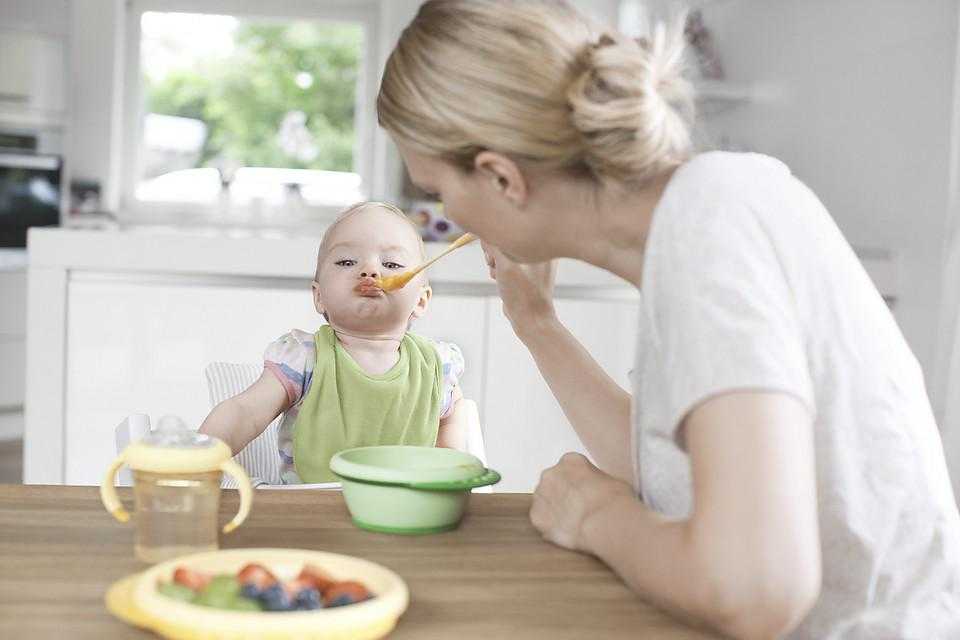
The yolk contains lecithin, necessary for the normal functioning of the nervous system, metabolism, as well as a large amount of nutrients. Egg whites also provide many benefits. When can you give your child these foods?
How to give a baby yolk for the first time
The first acquaintance of the baby with the egg begins with the yolk. Pediatricians are advised to introduce him to the baby already at the age of 7 months. If the child has a predisposition to allergies, then the introduction of this product into the diet should be discussed with a specialist.
Start feeding with an egg with ¼ pcs. hard-boiled yolk. And be sure to monitor the reaction of the crumbs. By 8 months, it is recommended to increase the amount of the product to ½ pcs.
How to give your baby protein for the first time
Egg protein is almost completely absorbed by the body, but it can be allergenic. Therefore, when including it in the diet of a child, you should additionally consult with a specialist.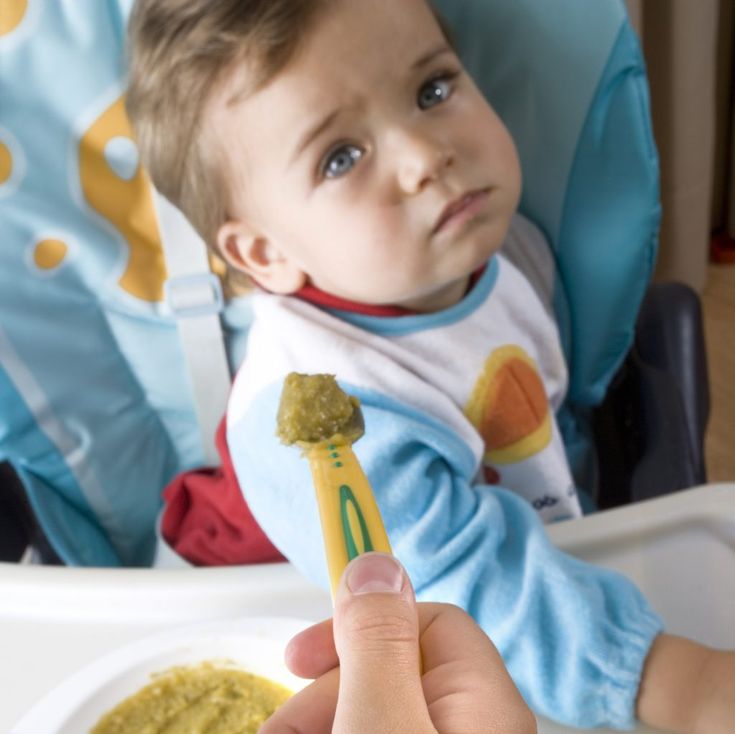
Complementary Feeding Restrictions
Do not introduce an egg or any other food item into your baby's diet if the baby is unwell, teething or vaccinations are planned.
There is no significant difference between chicken and quail eggs in terms of nutritional value.
How to cook an egg for a baby
Eggs should only be offered hard-boiled, and for older children also in the form of a steam omelette, which can also be supplemented with various vegetables. You can cook together, for example, beat an omelet with a whisk and have fun.
What eggs should not be given to children
Babies should not be given waterfowl eggs. In addition, it is strictly forbidden to give undercooked eggs. Soft-boiled and bagged eggs can be hazardous to health. Therefore, it is necessary to make sure that the egg is cooked, and the omelette is well steamed.
Reviewer Kovtun Tatiana Anatolievna
Scientific adviser to PROGRESS JSC, Candidate of Medical Sciences
All expert articles
At what age can you give an egg to a child and how to properly introduce yolk and protein into complementary foods
When can you start giving an egg to a child
How to feed an egg to a child
How to choose a variety and what you can find out by labeling
What is better to give - protein or yolk
How to cook eggs for children
An egg is a unique product, its biological value can hardly be overestimated. The yolk is especially valuable. It contains a lot of useful substances.
The yolk is especially valuable. It contains a lot of useful substances.
- Fats - please, and even in a well-digestible form, as many proteins as you like, and full-fledged amino acids.
- Minerals - in the widest range, trace elements - the richest composition.
- There are as many as 12 vitamins in the yolk. And among them, vitamin D is very important for every small child. There is also a lot of vitamin A in the yolk, besides, it is in an active state. There is also vitamin E (tocopherol), called a superfood because of its antioxidant properties. Yolks are rich in B vitamins, especially B1, B2, PP and B9 (folic acid).
- Choline is a vitamin-like substance important for brain development and memory formation. It improves the functioning of the liver, helping it to remove everything harmful from the body, including drugs, when they have already done their useful work.
- Calcium, phosphorus, as well as iron, iodine, copper and cobalt. These substances are also included.
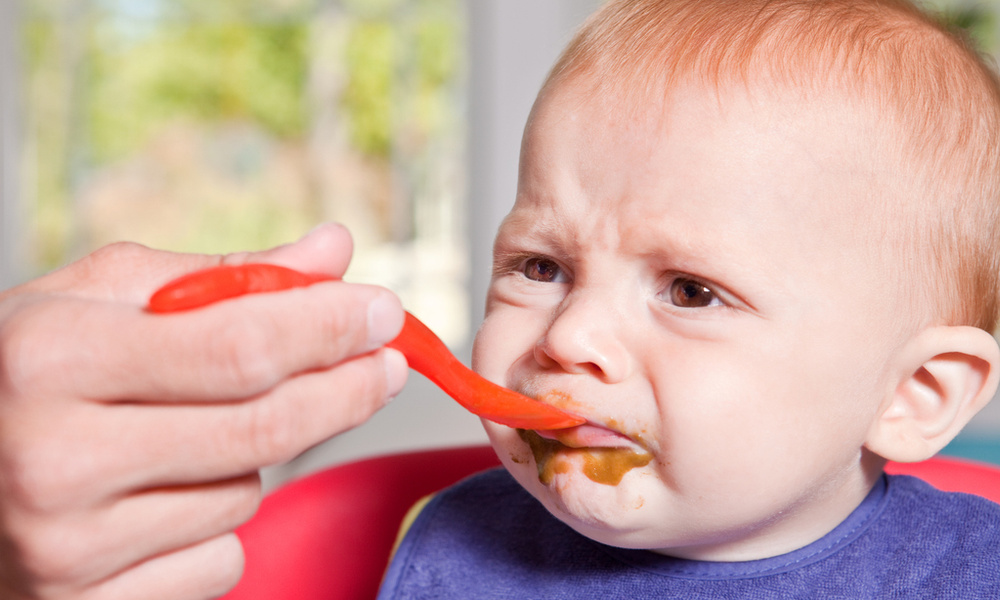
If the egg is so useful, then why not introduce it into complementary foods at least from the age of six months? There are good reasons for this.
Scientific research and experience of domestic pediatricians have shown that too early introduction of the yolk is fraught with the development of allergic reactions in children. The allergenicity of the egg itself is quite high. Plus, the biochemical composition of eggs has changed in recent years. When raising chickens, various pharmaceutical preparations are widely used in order to preserve the number of birds kept in cramped and overcrowded conditions.
Do not miss
-
Do not miss
7 rules that will help feed any child
So when can you give your child an egg? Pediatricians recommend doing this no earlier than eight months. At this age, the body is formed to take this product.
At this age, the body is formed to take this product.
To reduce the risk of allergies, it is better to use quail egg yolks for feeding at first, which cause allergies much less often than chicken ones. Hard boiled eggs further reduce the yolk's ability to cause allergies.
The yolk of a hard-boiled chicken egg is given to children with a small piece pounded in a spoonful of breast milk. Gradually, portions are brought to a quarter of the yolk, and after another 8–10 days, to half. On average, half a yolk per day (four eggs per week) is enough for a child up to almost a year old. Quail egg yolks will need 8-10 per week.
Pureed egg yolk can be added to vegetable purees and soups. Mixing the yolk with porridge is not worth it; protein dishes are better combined with vegetables. A whole egg can be given to children from the age of one.
- The first character indicates the permitted storage time.
- The letter "D" means "dietary" with a shelf life of seven days.
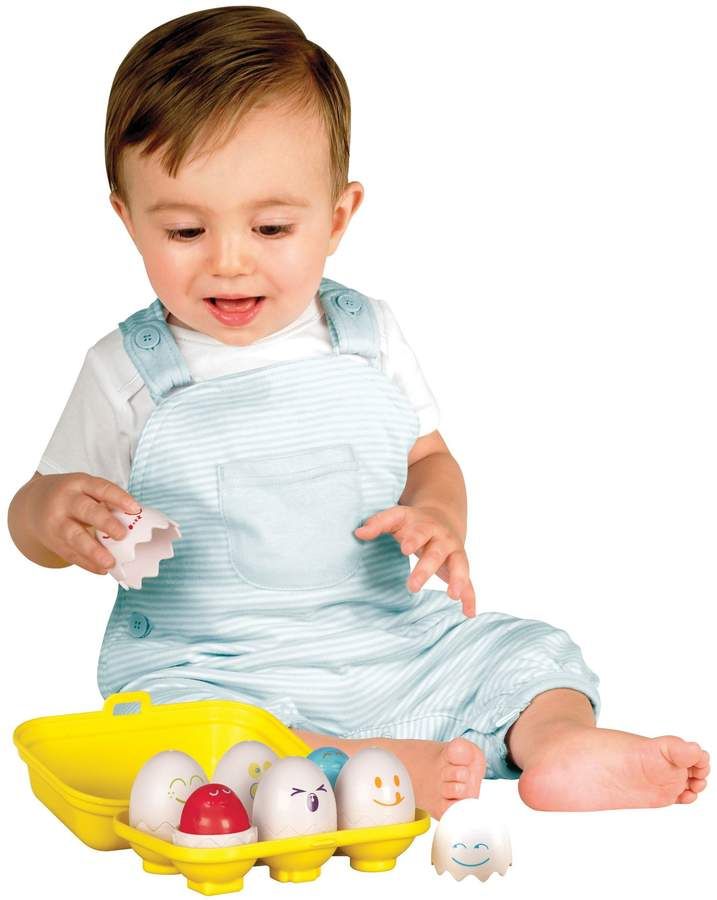 In past years, three-day eggs were considered dietary.
In past years, three-day eggs were considered dietary. - The letter "C" is a "table" egg, it is sold within 25 days. These eggs are not suitable for baby food. The fact is that during long-term storage, the fats and proteins of the egg partially change their structure, undergo decay into substances that are not indifferent to the children's liver.
Do not miss
-
Do not miss
7 mistakes you make in the first year of raising a child
- The second marking mark is tied to the weight of the egg: category "3" - from 35 to 45 g, "2" - from 45 to 55 g, "1" (first category) - from 55 to 65 g and "O" ( selected egg) - from 65 to 75 g. The letters "SV" are placed on table eggs of the highest category, and "D1" - on dietary eggs of the first category.
- There are difficulties with the shelf life of quail eggs.
 A child can cook quail eggs laid no more than seven days ago, and in stores their expiration dates have been extended to 60 days.
A child can cook quail eggs laid no more than seven days ago, and in stores their expiration dates have been extended to 60 days.
The answer to the question of when you can give an egg yolk to a child is obvious: from eight months, when this product is introduced into the diet. But when can you give your child egg white?
Do not do this, and not only because of the danger of salmonellosis or other infections. Protein is poorly digested. In addition, it contains the substance avidin, which binds and removes some valuable vitamins from the body, in particular biotin, with a lack of which the child's appetite first of all worsens.
Fortunately, even with a short and gentle heat treatment, avidin loses its undesirable activity. Therefore, if the protein still gets into the baby’s plate, nothing bad will happen.
Eggs are best cooked soft-boiled or as a steam omelette. With regard to infections, an omelet is completely safe, but only very fresh eggs of domestic chickens, whose contacts with other chickens are limited, can be boiled soft, which means that the risk of infection is minimized.



